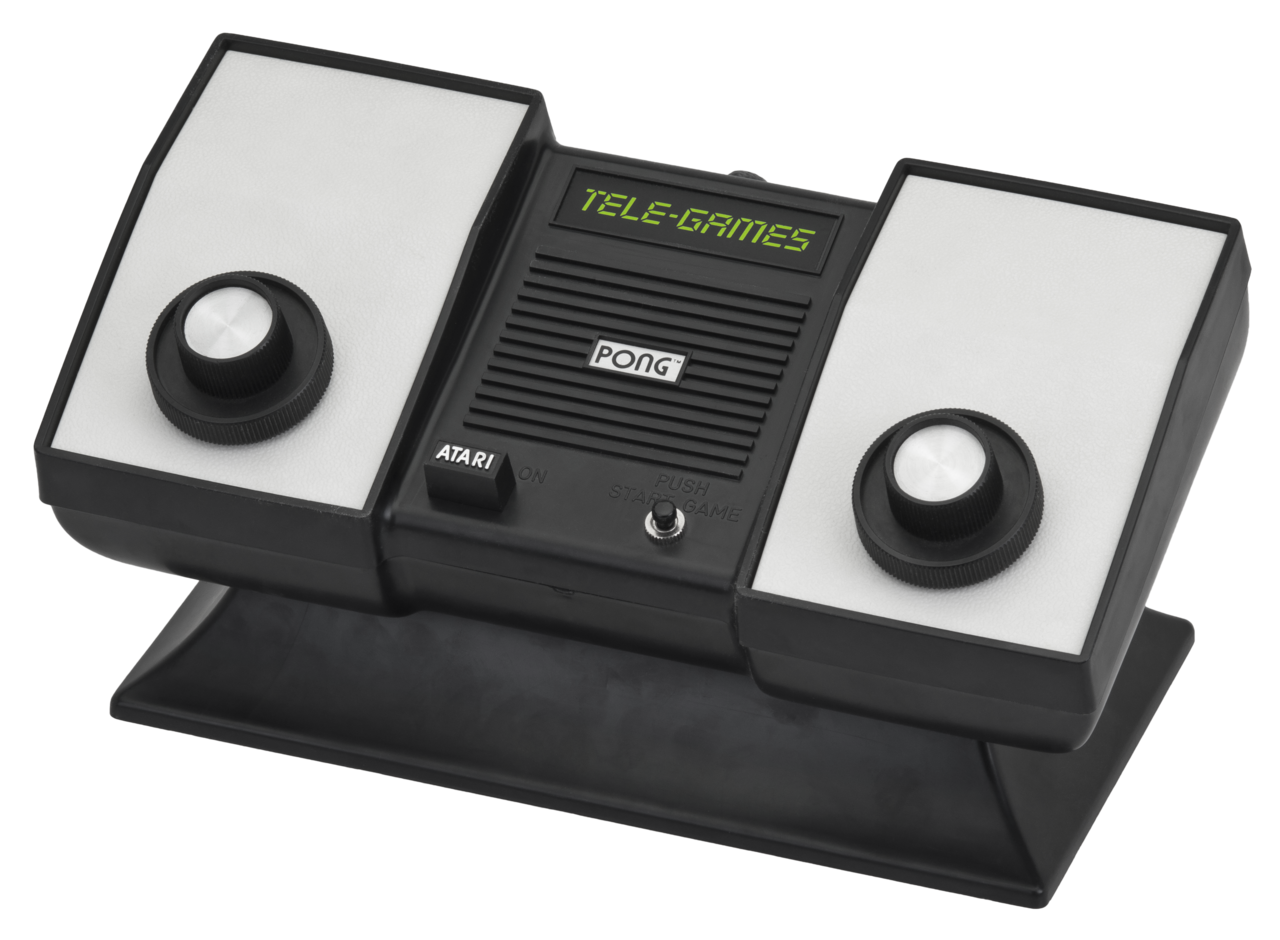-
1976
Hardware Description
As early as 1974, Atari started to design a home version of PONG, originally proposed by Harold Lee in 1973. The system was designed by three engineers: Harold Lee, Alan Alcorn and Bob Brown.
Because Magnavox Odyssey was already being left behind by customers (mostly due to their lack of satisfaction, and also the bad rumor that it would only work with a Magnavox TV set), sellers were not attracted by Atari's PONG game until Sears goes ahead and sells the system under their Tele-Games label for Christmas 1975. Following this huge success, Atari released its own version of PONG in 1976.
The system had an important feature that most others didn't have in 1975: the use of a single chip that provided games with digital on-screen scoring and attractive sound. As a matter of fact, other systems were still using analog or digital circuits using discrete components. Digial on-screen scoring would have required more components in the circuits, hence an increase of the retail price. Because Atari designed a special PONG chip, the system could sell at normal price with advanced features.
In 1975, Atari was rejected by toys and electronics manufacturers as most other PONG systems didn't sell much. One of Atari's directors decided to contact Tom Quinn, who worked at Sears/Roebuck. After several meetings with Bushnell, Sears ordered 150,000 PONG systems for Christmas. Assembled by Atari, the system sold under the Sears Tele-Games label (Pong model 25796). Some people still remember Christmas 1975 when they were going to the shops early in the morning and wait several hours to sign a list allowing them to receive a PONG system.
Pong will be a huge success, and will be the cause of multiple imitations and several law suits. However, its popularity did not fall until more advanced systems came on the market.
-
Model Number:
C-100 -
Manufacturer:
-
Hardware Type:
Video Game -
Manufacture Year:
1976 -
More Info:
-
We recognize our sponsors starting at $1 per entry.
Learn more at https://www.ithistory.org/benefits

